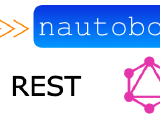2023 Automation Review: Top 3
·542 words·3 mins
The year of 2023 I think may have had some of the biggest leaps in the Network Automation capabilities that are being delivered by some of the best in the business. With Nautobot’s Golden Config App adding the ability to complete configuration remediation and Ansible release Event Driven Ansible, there are a couple of powerful tools to help you with your Network Automation. And all with a great new conference addition specific to Network Automation.









